European Waterways Barge Cruise Through Alsace & Lorraine
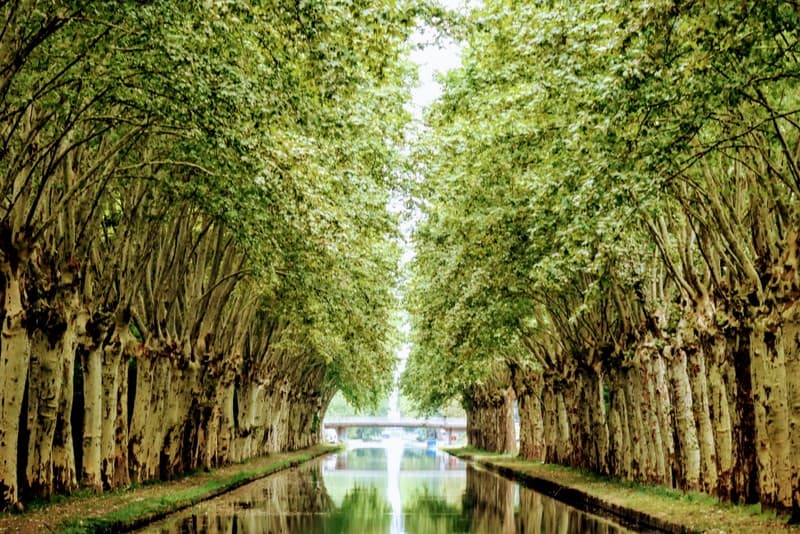
The itinerary of our European Waterways hotel barge cruise through Alsace & Lorraine was limited to the northeast corner of France so we didn’t cover much ground—at least, literally.
Our flat-bottomed boat meandered ever so slowly through canals and inland waterways from Niderviller to Krafft. Over six days, we covered a distance of only 35 miles in total.

But the snail’s pace of the voyage afforded an abundance of opportunities for us to get a peek at the unique nooks and crannies of the region in a deeper way.
Our very small, merry band of seven passengers (and six crew) cruised through small villages and towns adjacent to the canals where there were few other tourists.
We walked along the towpaths rubbing shoulders with real people who live and work there—locals bicycling, wheeling baby carriages and walking dogs. We savored regional foods and wines throughout the week with an onboard French chef.
Barge Cruise through Alsace & Lorraine: Day-by-Day

We’ve written several pieces about the generic barging experience but wanted to offer a more nuanced description of the day-to-day experience of a barge cruise through Alsace & Lorraine for those who want to know more.
Day 1 – First night onboard in Niderviller
We met our fellow cruisers in Strasbourg, the capital city of the Grand Est region (formerly called Alsace), where we boarded a spacious, private, eight-seat Mercedes minivan with a roof high enough to stand up.
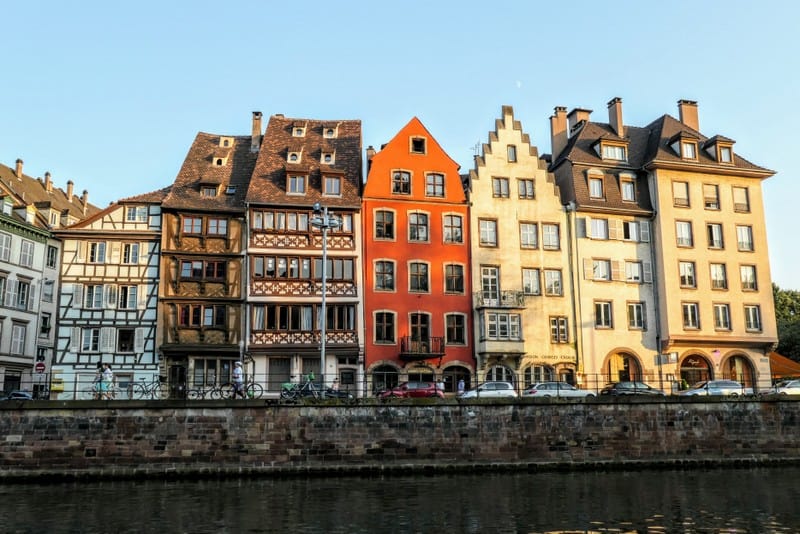
One of the nice things about barging is that guests can arrange to spend some extra time pre- or post-cruise in one place or another. We had previously spent only a day in Strasbourg and wanted to return so we arranged to stay there for a few days before our cruise.
Florian—our program director, captain and van driver all-in-one—warmly welcomed us at Regent Petite France Hotel & Spa, our designated meeting point in Strasbourg.
Our ride en route to the barge, docked in the commune (small village) of Niderviller, gave us time to get to know him and each other.
Florian was impressive: multilingual, personable, well-traveled, a history buff and a long-time employee of the company. As we enjoyed a champagne welcome toast (when in France…) and were introduced to the rest of the crew, our suitcases were whisked to our cabins with just enough time to unpack before dinner.
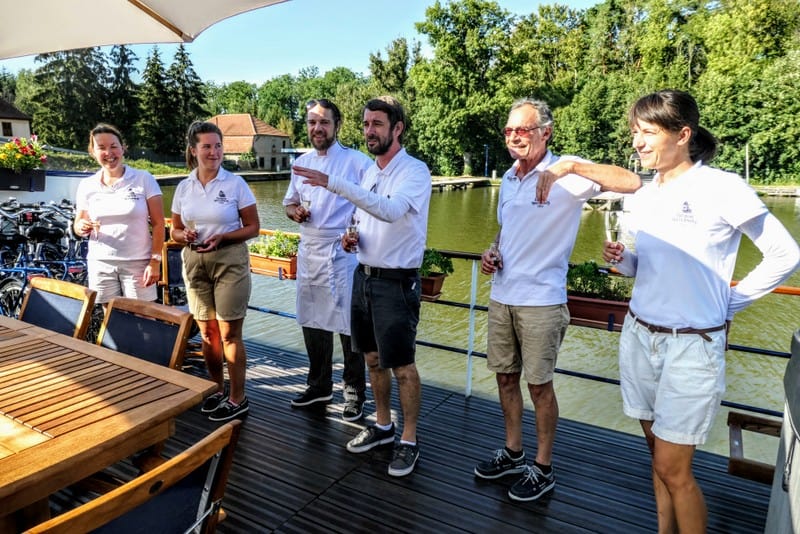
What are meals like on a barge?
On the subject of barge cuisine: Food is an integral part of the daily barge experience. The chef is not only a cook but also a food educator.
Lunch and dinners are culinary experiences to be treasured. Our chef, Holly, told us about the local ingredients he used and the special recipes associated with the region through which we were traveling.
Lunch and dinners were preceded by an introduction to different regional wines, white, red and rosé. We learned about the grapes, terroir and producers. Before dessert, one of the crew taught us about the variety of French cheeses served as our cheese course.
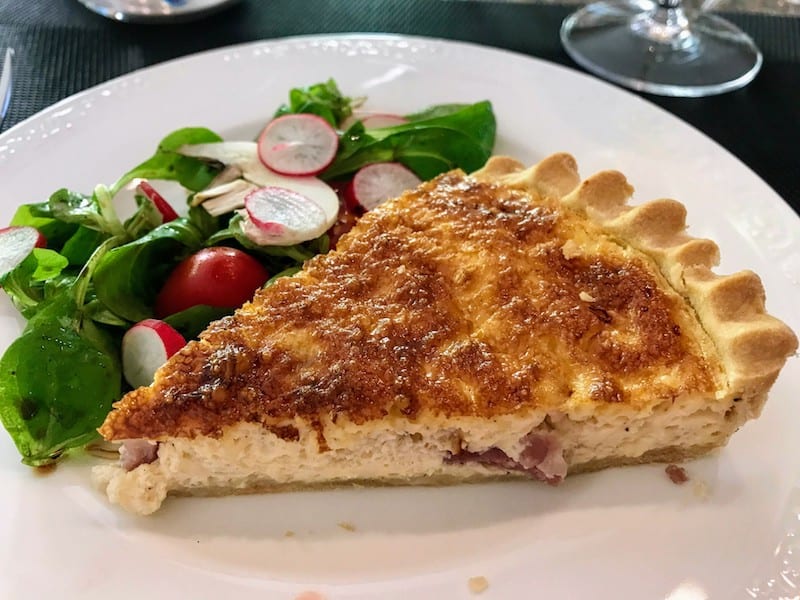
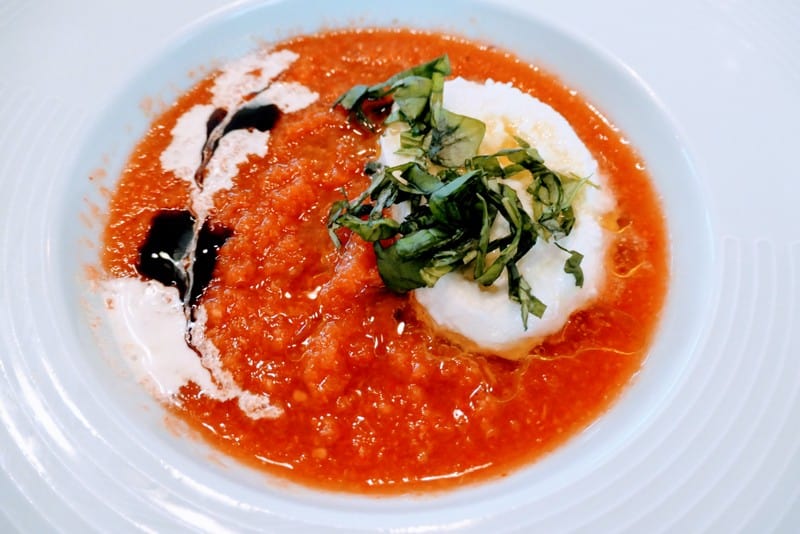
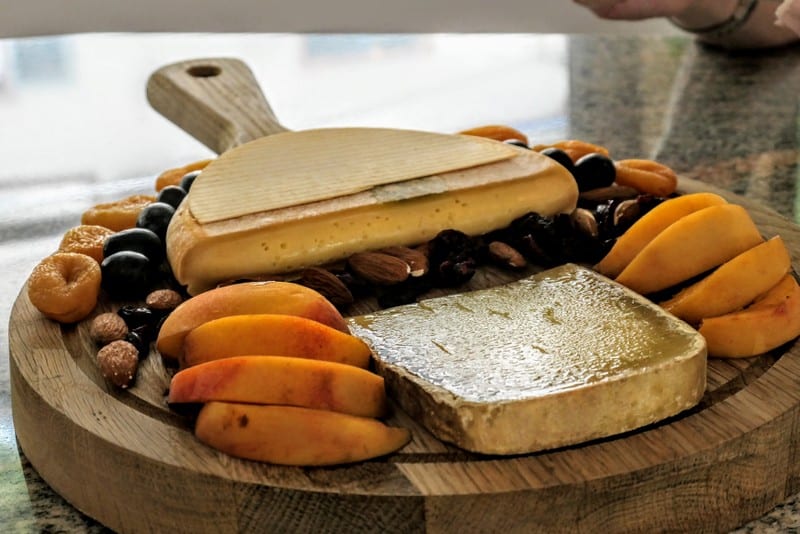
Day 2 – Niderville to Lutzelbourg
Niderville is on the Canal de la Marne au Rhin (Marne-Rhine Canal). One of the thrills of barging is experiencing the marvels of engineering required to build canals that were once used to transport goods along Europe’s waterways before these workboats were repurposed as hotel barges.
On our first full day on the boat, we traveled through two tunnels with limited lighting, one totaling 475m (about 1/3 mile) in Niderviller and another about 2,306m (about 1.5 miles) in Arzviller. Chef Holly seized the opportunity to serve an elegant candlelit breakfast.
One of our first stops was at Fusion Libre in Saint-Louis to visit the studio of a young glassblower practicing an old art associated with the area, masterfully turning blocks of glass into objets d’art.
The same morning, we caught our first glimpse of the Vosges Mountains before we reached a unique “barge elevator,” Le Plan Incliné de St Louis-Arzviller. Incredibly, this elevator carried our barge, Panache, down the 41° inclined plane of a 450-foot mountainside. This transverse boatlift is the only one of this type in all of Europe. Constructed in 1969, it eliminated 17 locks, saving a day of navigation along the canal.
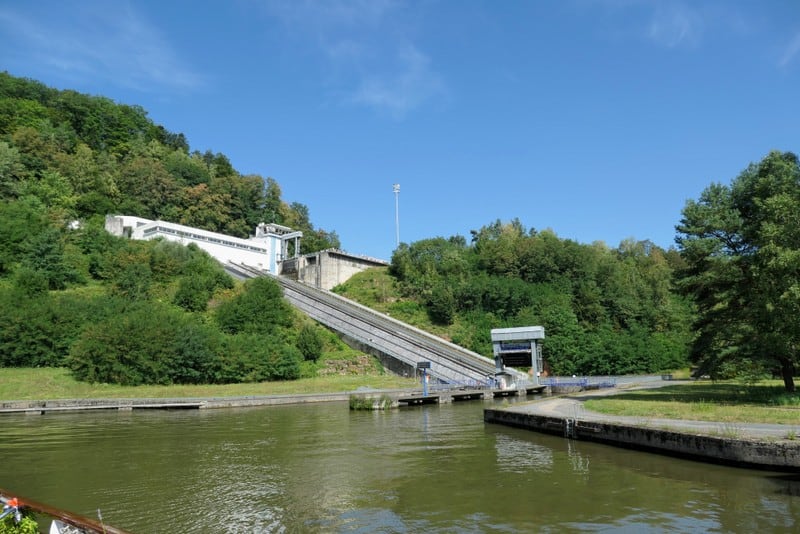
On YouTube: How the St. Louis-Arzviller elevators works:
Our first afternoon outing via our minibus was to Sarrebourg, probably best known for its Marc Chagall stain-glassed windows housed in the town’s Cordeliers Chapel.
After our self-guided audio tour, we walked to the Sarrebourg Regional Museum, a small, contemporary-style museum that captures the town’s history with art and artifacts dating back to Roman and Medieval times.
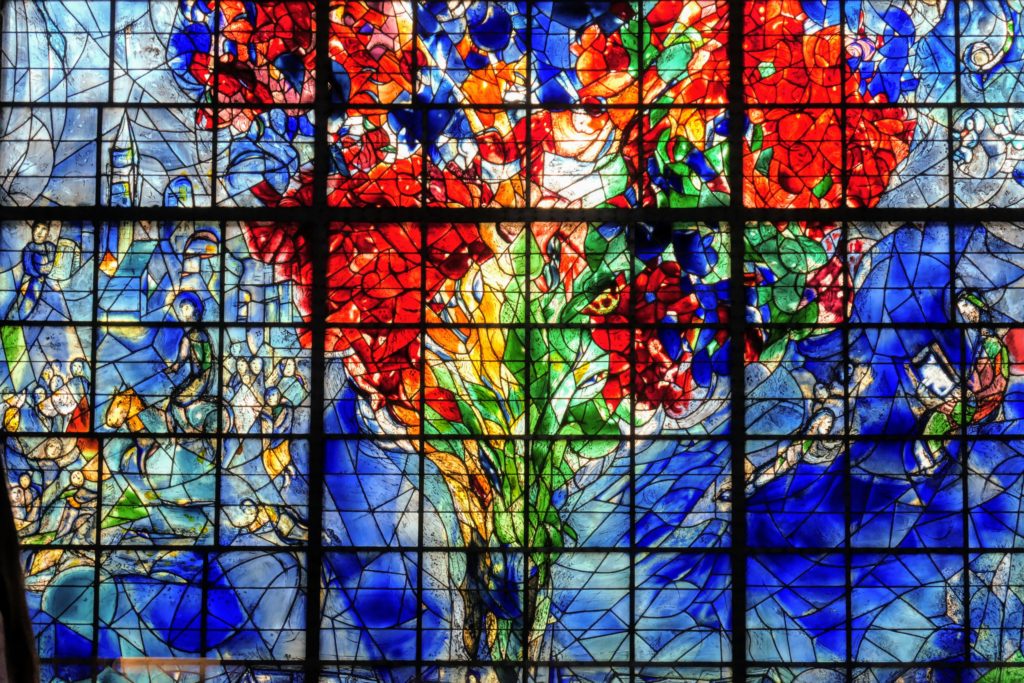
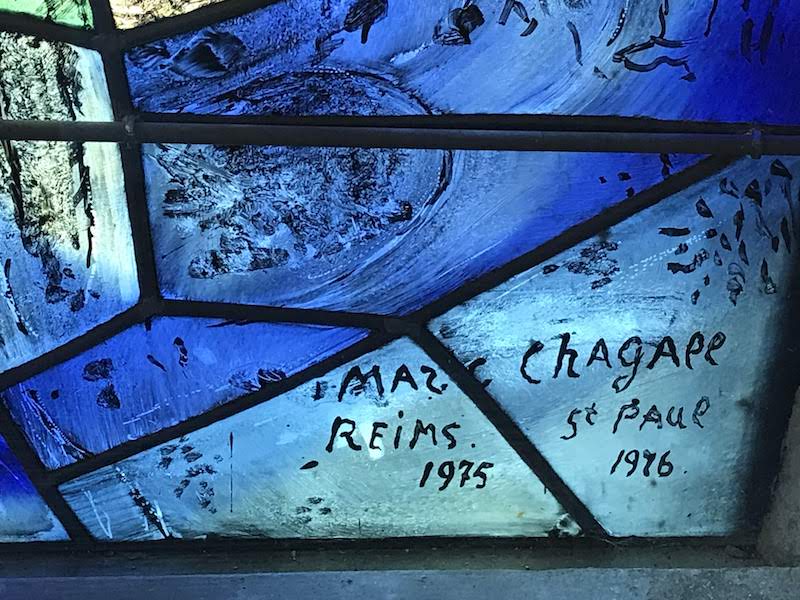
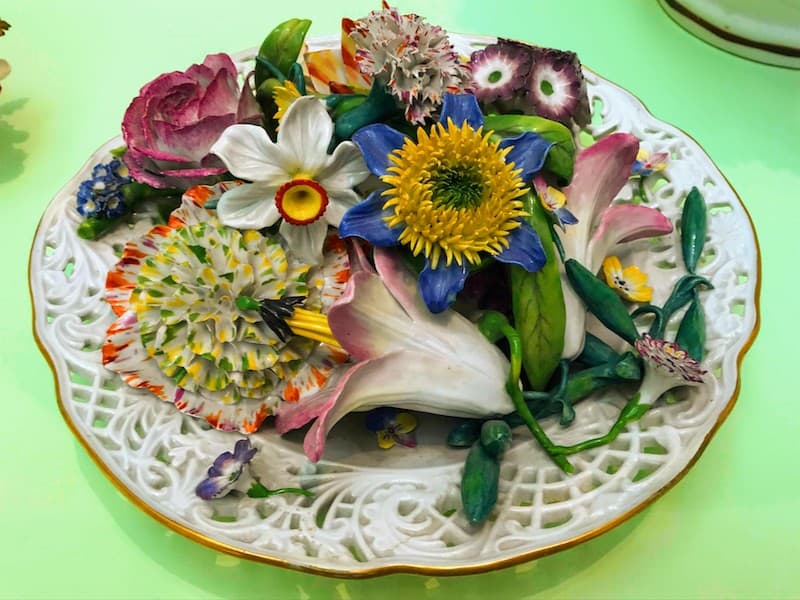
On the way back to the barge, we stopped at an abandoned castle first built in 1076, Chateau de Lutzelbourg, which was perched high on a mountain. From that height, our barge on the canal looked like a tiny toy boat.
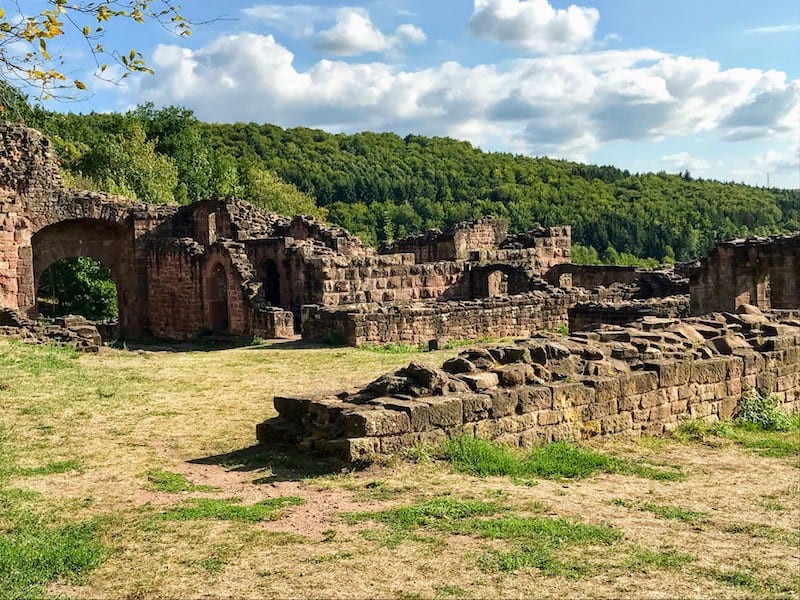
Each day on a barge was topped off with a specialty cocktail prepared by one of the crew’s housekeepers/waitresses/mixologists. (As you might suspect by now, when the numbers of crew are small—although high in terms of the crew: passenger ratio—everyone pitches in and multitasks to make the guest experience feel seamless).
Chef Holly paired the cocktails with an Alsatian specialty, flammedkeuche (also called tarte flambée). Why two names? Alsatian food (and its language and culture) is a fusion of German and French, a phenomenon that was reflected over and over during our journey.
Day 3 – Moored at Lutzelbourg
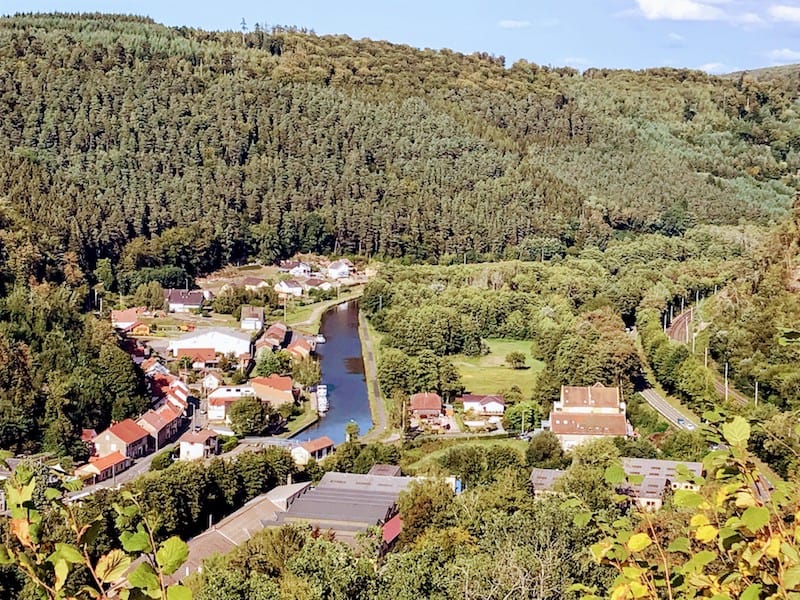
Each morning, the chef or another member of the crew surreptitiously ran or bicycled to a local bakery in the early morning to bring back the fresh baguettes, croissants and pastries that awaited us at breakfast.
In Lutzelbourg, Florian gave early risers the option of accompanying him on a brisk walk to the local bakery, Boulangerie Patisserie Ruby, before the rest of the town had awakened.

The owner told us how small bakers like him, were increasingly being put out of business by large corporations. In the room beside the bakery, older townsmen chatted over coffee in what looked like a regular morning routine.
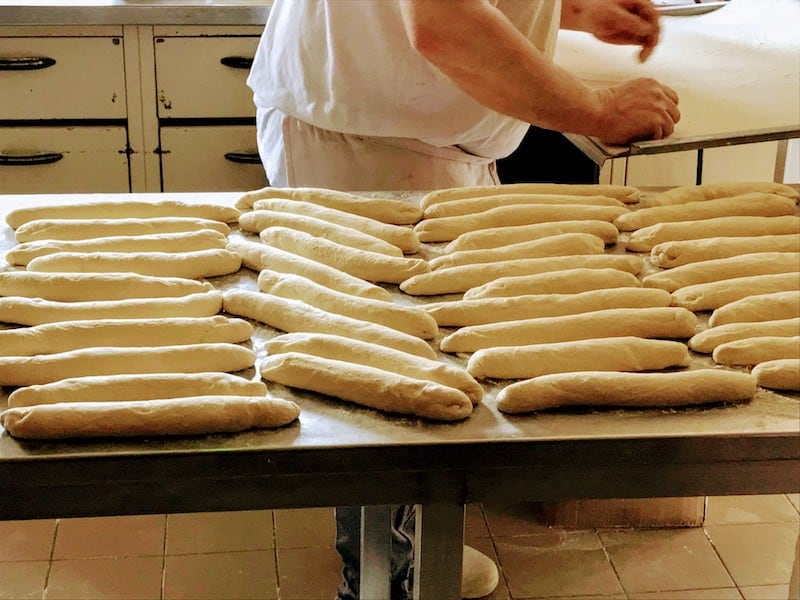
After breakfast, we cruised through the forests of the Zorn Valley until we reached Saverne, a slightly larger town with a bustling business district dominated by the Rohan Castle, once a residence of the bishops of Strasbourg.
In the afternoon, Florian drove us to the picturesque mountaintop village of La Petite-Pierre with its chateau and church before heading off to the Muséee Lalique in Wingen-sur-Moder, a small village known for its glassmaking.
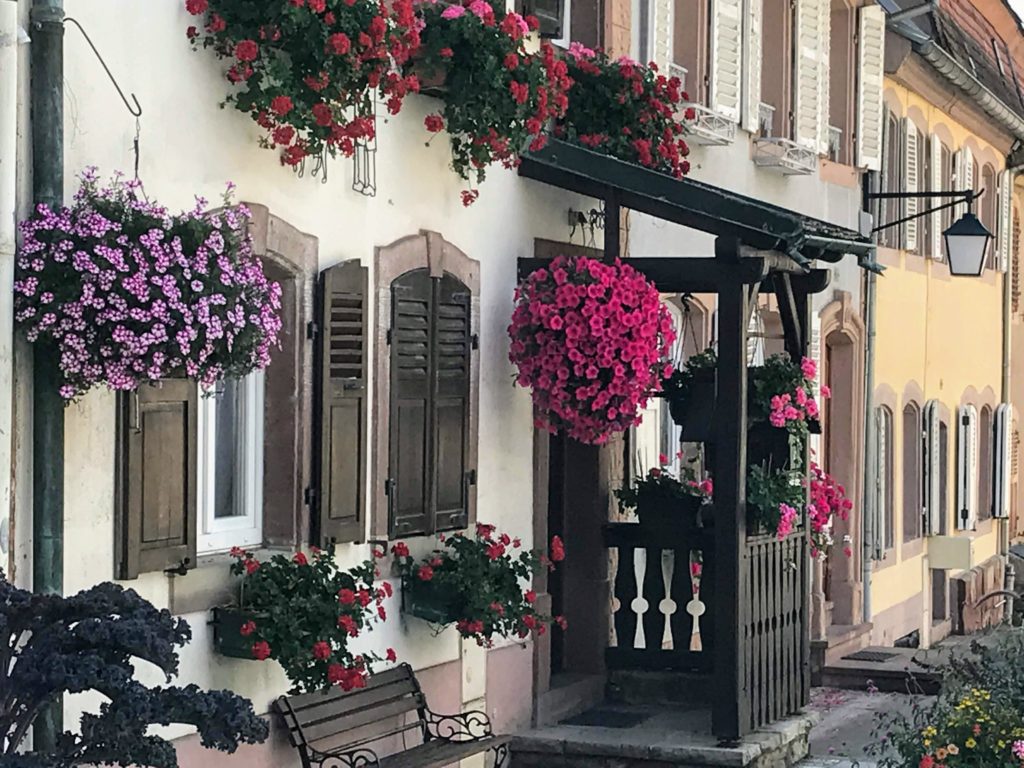
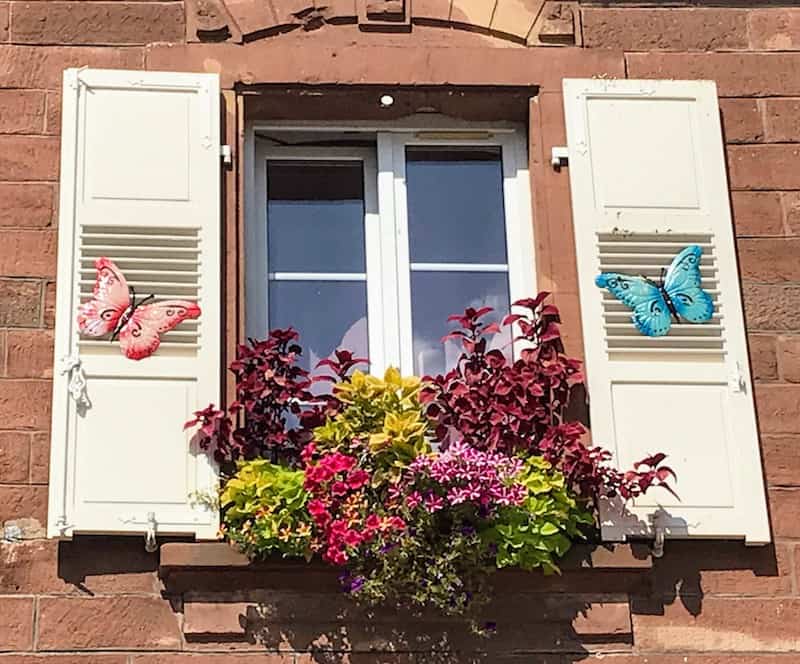
The museum’s collection of Art Nouveau and Art Deco glass and perfume bottles is considered the best in the world.
When we returned to Panache, we were met by a surprise at cocktail time: A gypsy-jazz band (a genre that started in Paris in the 30s) joined us on the deck for an intimate concert as the sun began to set before dinner.
Day 4 – Saverne to Waltenheim-sur-Zorn
Our walking tour in Saverne included a morning visit to the parish church and time to explore the shops on our own. Then Florian drove to Château de Hohbarr, one of many abandoned medieval castles in the region.
We walked to the top of the hillside, soaking in expansive views of the mountains and the Valley of the Zorn.
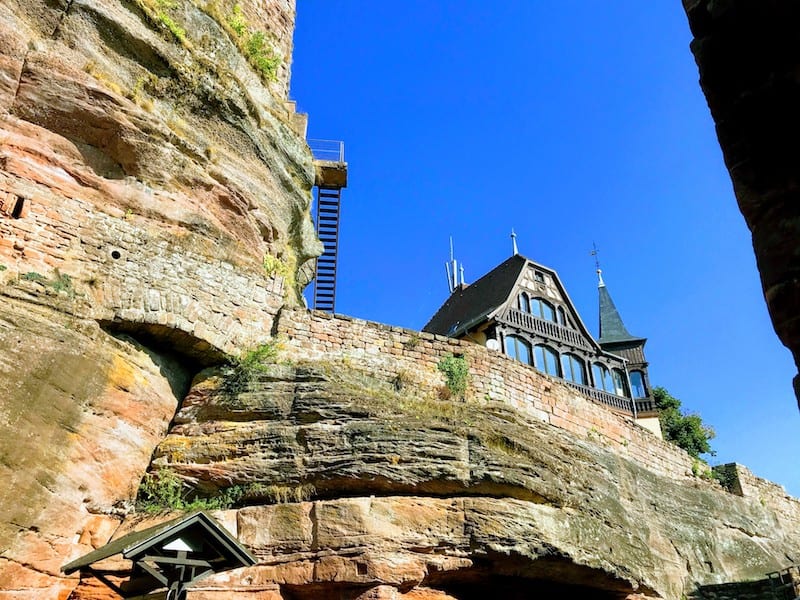
We cruised through several more locks, affording us more time to walk on the towpaths before mooring in Waltenheim-sur-Zorn. Once more, we took a van ride to Villa Meteor in Hochfelden, the oldest privately-owned brewery in France (founded in 1640). Our stop included a house tour, a self-guided tour of the brewing process and a beer tasting.
We had a lively dinner (and probably tasted too many local wines and digestifs) at a small restaurant, A L’Etoile, in the town of Mittelhausen, where we enjoyed Alsatian specialties with Judith, our amiable deckhand.
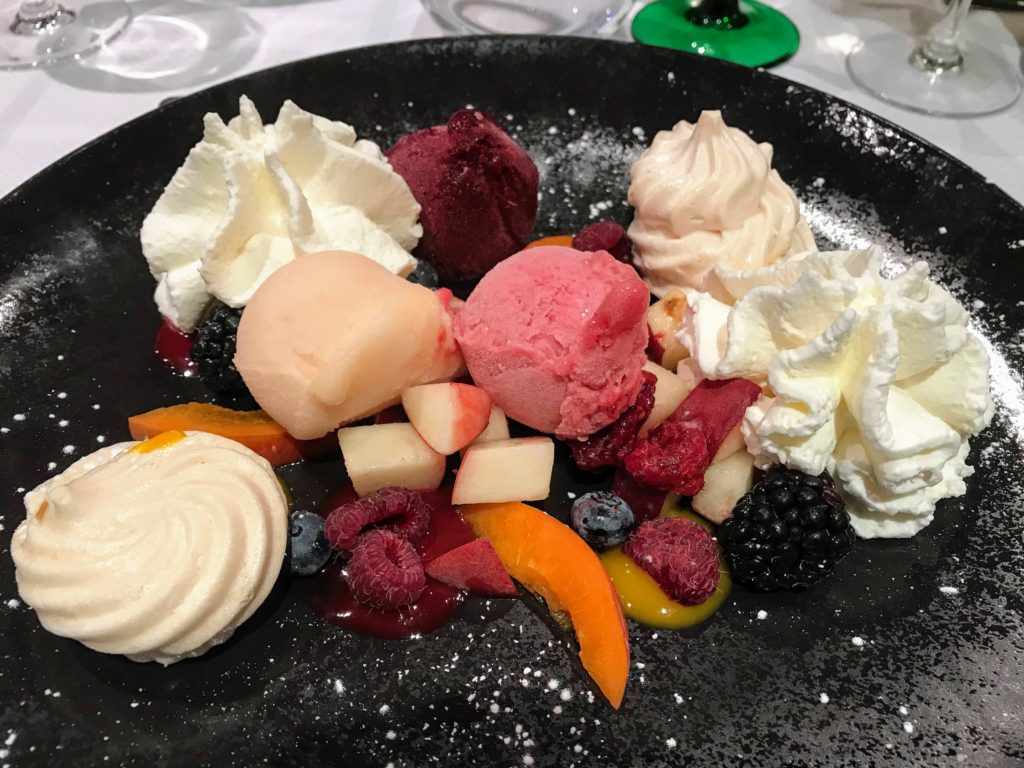
Day 5 – Waltenheim-sur-Zorn to Strasbourg
The day started with a scenic drive through the Vosges hills on the Route des Vins, the Alsatian Wine Trail.
We passed cornfields, vineyards and wineries in charming little villages. The barge company had arranged a private tasting of Gewurztraminer, Pinot Noir and Riesling wines for us at Domaine Pfister, an organic wine producer in Dahlenheim.

After lunch, we cruised through the Brumath Forest and got to see the newer parts of Strasbourg, including the European Parliament Building, from the perspective of the Ill River before mooring in the city that night.
Day 6 – Strasbourg to Krafft
A local guide met us in Strasbourg, showing us many of the sites of the old town with medieval half-timbered buildings, a UNESCO World Heritage Site.
He talked about the city’s changing demographics, showed us how to use the public tram, and offered an insider’s view of the culture.
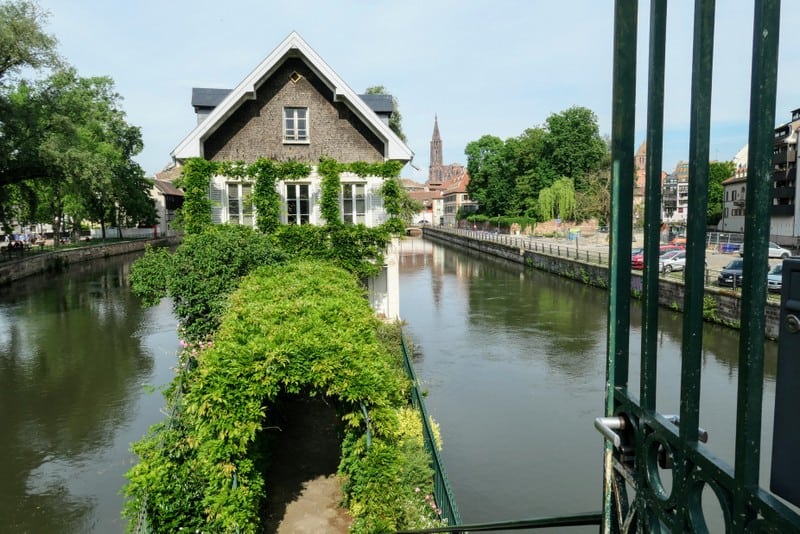
While large tour groups aren’t allowed in parts of the Strasbourg Cathedral en masse, he deftly weaved our small family-like posse through the crowds just in time to see the once-a-day performance of the magnificent Astronomical Clock.
When we returned, the barge cruised through the Grand Ried wetlands, abundant with greenery and wildlife, before we reached our final mooring at Krafft. Our last dinner was as delicious as it was beautifully presented, a final culinary memory of our journey.
Day 7 – Moored at Krafft
We disembarked after breakfast, with two European Waterway vans waiting to transfer us either to the train station or Strasbourg Airport, depending on guest preferences.
Barge cruising is a hassle-free, all-inclusive way to travel. Our barge had a well-stocked open bar, all admissions and tours were included, and the only out-of-pocket cost was gratuities for the crew—who well-deserved them.
The six-day cruise passed quickly but left rich memories of a portion of Alsace & Lorraine, a region of France we hadn’t known before. We were also enriched by the friendships we made with fellow passengers and crew.
What are the differences between barge cruising and river cruising?
- Barges hold a very small number of passengers, almost always fewer than 12. The feel is very intimate with more interaction among fellow passengers.
- Barges are smaller as are their staterooms. Accommodations, although modern and comfortable, show the patina of age.
- Barges cruise primarily via canals and locks rather than on rivers.
- Because canals are much narrower and shallower than rivers (and certainly than oceans), there is very little sway or chance of motion sickness.
- Barges tend to stop in smaller villages and towns as opposed to cities.
- The focus on fine dining (and food and wine education) is much greater on barge cruises.
- The service on barges is more personalized with higher crew: passenger ratios.
-
Because it is a fully-inclusive travel product, the cost per day of barging tends to be higher than river or ocean cruising, except in luxury suites.
IF YOU GO
- Barges through Alsace & Lorraine cruise between April and October.
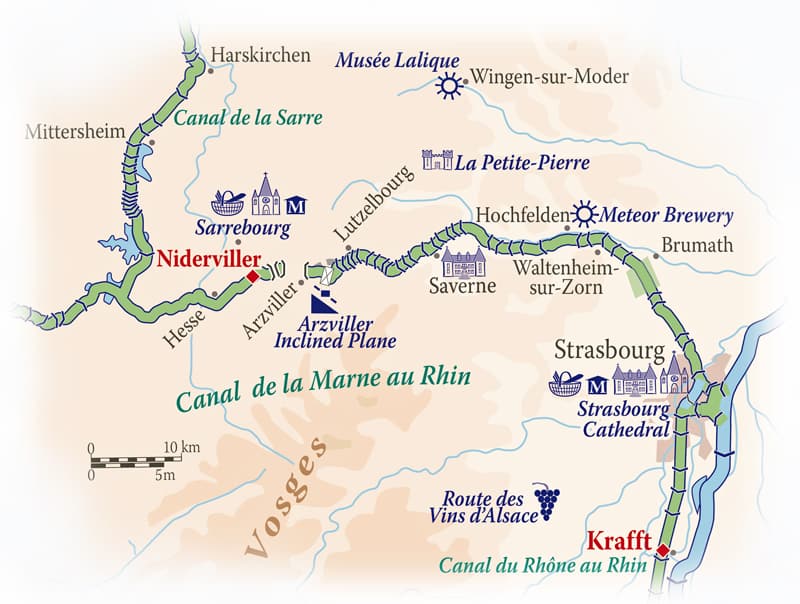
READ MORE
SAVE TO PINTEREST!!
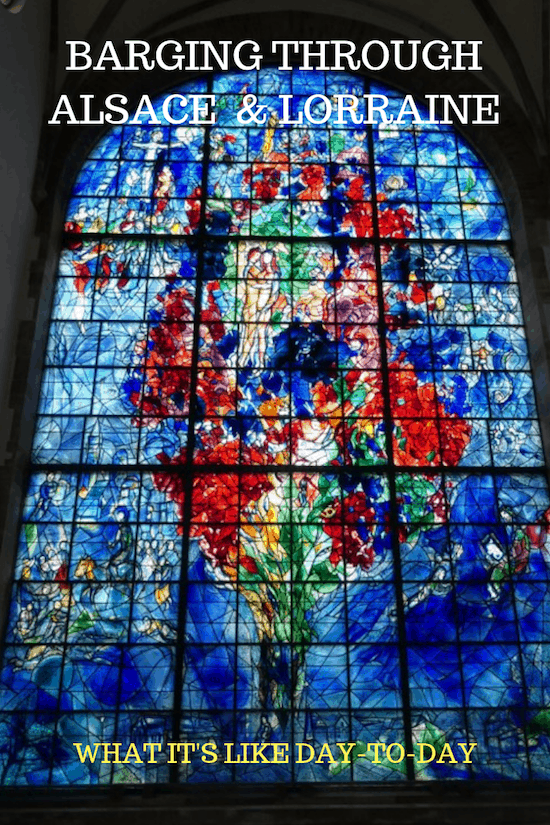
All photo credits: Jerome Levine
Previously on MoreTimeToTravel.com:
- Pampered Luxury: What is it like to take a barge cruise?
- What To Pack For a Barge Cruise: A Guide for First-Timers
- Touring Burgundy by Barge
- Plan a Girlfriend’s Getaway on a Hotel Barge
- One Day in Strasbourg: What To See And Do
My Article on Forbes:
Disclosure: We were guests of European Waterways but any opinions expressed in this post are our own.
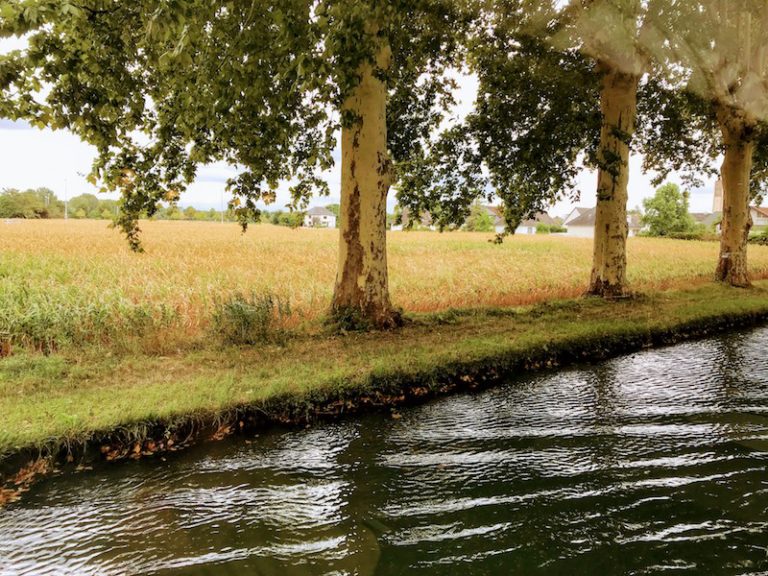

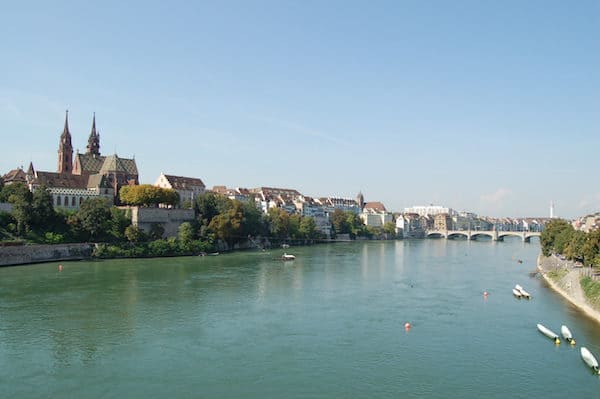
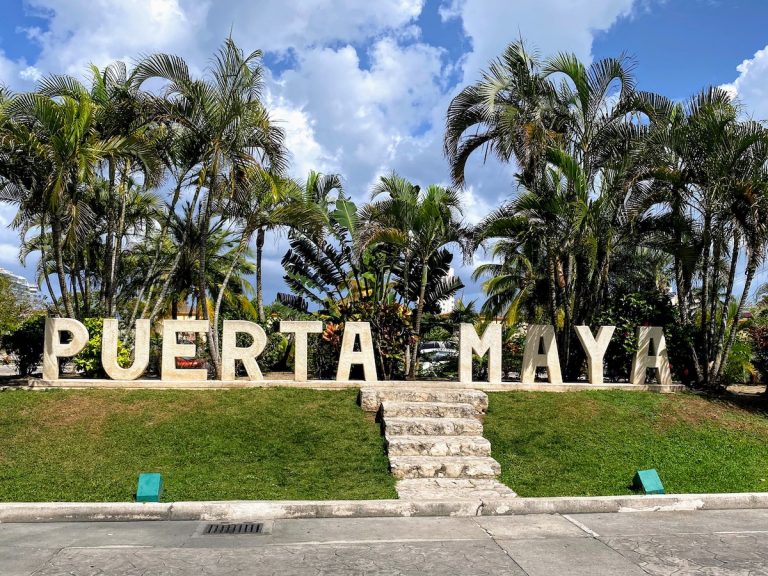
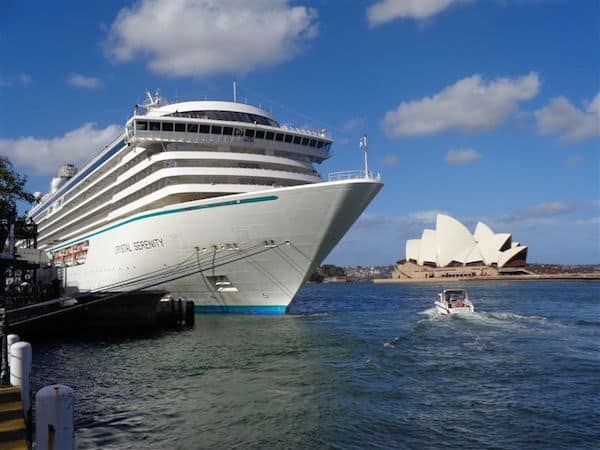
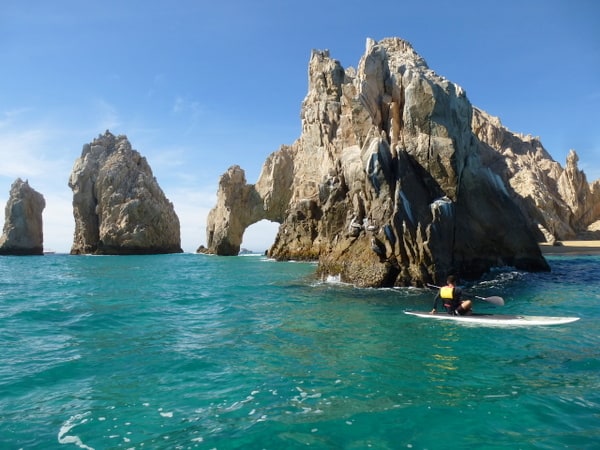
What a delicious way to see the sights. A barge cruise through Alsace and Lorraine looks like a perfect way to slow down the pace and truly enjoy the countryside. It also looks to be a decadent way to enjoy some tasty dishes.
Yes, yes, you are right on both accounts!
A barge cruise through Alsace and Lorraine looks like a lusciously leisurely way to escape the crowds and really experience a destination. I love that atmospheric photos of the graceful trees draped across the canal. I was wondering if the small canals experience low water levels like the river cruises sometimes do?
It would be very unusual for a barge to be affected by low water levels because the locks allow for readjusting them. I guess it would be theoretically possible if a large river connecting to a canal was dried up. It’s not something I would worry about on a barge cruise.
This shows the differences among barge, river, and ocean cruises. It is slow, immersive travel that also focuses on local food and wine cuisine, more opportunities for friendships, and very personal service. Luxurious, delicious, and pampered travel. I will opt for barge and river cruises than ocean ones.
Cruising, whether on massive ocean ships or smaller, intimate barges, will forever be my most cherished form of travel. The unique mixture of community, cultural immersion and personalized experience is unlike anything else. Plus, the food is always impeccable. So glad you got to enjoy this extraordinary trip through Alsace and Lorraine.
Yes, my favorite way to travel, too! Love unpacking once and being able to throw myself into a destination!
We’ve done several river cruises, but this makes me want to size down to one of these barges. And, of course, I absolutely love France, especially this part. It looks like a spectacular way to see the countryside, and a more intimate look at a lot of small towns and other details.
It’s nothing short of heavenly for Francophiles!
Oh, this barge trip looks heavenly! The food looks divine. And how nice to “cruise” on such an intimate vessel. Curious — did you have bicycles onboard so you could bicycle ashore?
Yes, we had bicycles on board, too!
I didn’t want this post to end! This sounds like a fabulous way to see visit a region. My one barge experience was sooooo different. The year my father was an exchange teacher in England (1969-70), my parents rented a canal boat for a week during a school break. It was just our family of 5 and we had to jump off and work the locks ourselves, steer the boat in, etc. My father usually managed to find a patch of stinging nettles for us to jump into when we had to get off to work the locks. Still, it was an interesting experience—one I’d like to repeat at a luxury level.
I promise that an experience on a contemporary hotel barge will erase any bad memories! That said: How fortunate you were to have those experiences when you were young. Travel must be in your DNA.
I’ve done two river cruises and my husband and I have decided this might be our favorite way to travel together! I think we might need to add a barge cruise to that list. This looks spectacular and a great way to travel through the Alsace and Lorraine areas. The food photos have made me extremely hungry! Yum.
Traveling on a barge was a unique way to rub shoulders with locals!
The food, though. The gazpacho looks very appetizing.
This trip looks like heaven to me and I aspire to do one someday. The gypsy jazz music is my favorite and there is a local band where I live who I go out to see and hear once a month. They have swing dancers come by and it’s very entertaining.
This was my first exposure to gypsy jazz! I loved it, too!